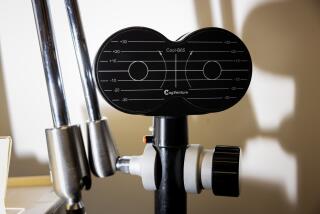My Turn: The academic debate over the causes of autism hits home for this family
Autism is an environmental disorder â at least in some cases. Just as lead paint chips can cause learning disabilities and radon in the basement can cause lung cancer, certain chemicals and other outside influences seem to help set autism in motion.
But autism is also a genetic condition. It definitely runs in families, and scientists have identified several specific genes that put kids at risk.
Scientists are trying to understand this complicated push and pull that molds a growing brain. A new study of twins published in the Archives of General Psychiatry makes a case that the disease is about 60% environmental and 40% genetic. Other experts have quickly disputed the finding, claiming that genes are the biggest driver of autism.
This is one academic debate that actually matters to real families. Like mine. My 9-year-old son isnât severely autistic â he has a strong vocabulary, he can bravely tolerate hugs and he can more or less keep up in a mainstream classroom â but heâs stuck squarely on the autism spectrum, that hard-to-define neighborhood full of kids who are living in their own worlds.
He almost never makes eye contact, heâs reluctant to try new things and he just assumes that everyone else is fascinated with flying things, old Mac computers and the evolution of BBC promos. Seriously, heâll give you the full rundown of promos from the 1950s to today if you ask, which I donât especially recommend.
His mom and I worry about his future in the larger world where social skills matter more than an encyclopedic knowledge of hot air balloons. Of course, weâd also like to know how we got in this situation. His older brother has some similar tendencies, but heâs not as severely affected.
So what happened?
We definitely do not blame vaccines. The so-called link between vaccines and autism has never been scientifically proved, the main study that raised so many fears turned out to be âan elaborate fraud,â in the words of the journal that originally published it, and the rates of autism have continued to climb even after vaccine manufacturers removed thimerosal, the mercury-laced preservative that was an alleged autism trigger.
We understand that chemicals could have possibly played a role. Women who are exposed to mercury, cadmium or vinyl chloride before conceiving seem to be especially likely to have autistic kids. My wife didnât exactly spend a lot of time hanging around thermometer factories, but who knows? Itâs at least theoretically possible that something got into her system and sent our sonâs growing brain down a strange path.
Interestingly, autism is also more common in the north, perhaps because moms there donât get enough sunlight to load up on vitamin D, a compound that plays a big role in development. We live in Montana, so again, who knows? Perhaps our address played a role.
But we also know that autism is complicated, just like our son. Whether the true balance between genetics and environment is 60/40 or 40/60 or something else entirely, there is no single thing that made him who he is.
I can say for sure that his parents are strange in their own ways. We can see shades of autism in each other; more than shades when we talk about our favorite subjects.
He never had any chance of being especially gifted athletically or socially. But what could he have been if his world had been a little different in the early days? That study will never be conducted. Weâll take him as he is, and we hope everyone else is ready for him too.
Woolston is a freelance health, science and travel writer. He lives in Billings, Mont., with his wife and two sons.
Submissions to My Turn should be 500 words or fewer, are subject to editing and become property of the Tribune Co. Email [email protected]. Read more at latimes.com/myturn.






